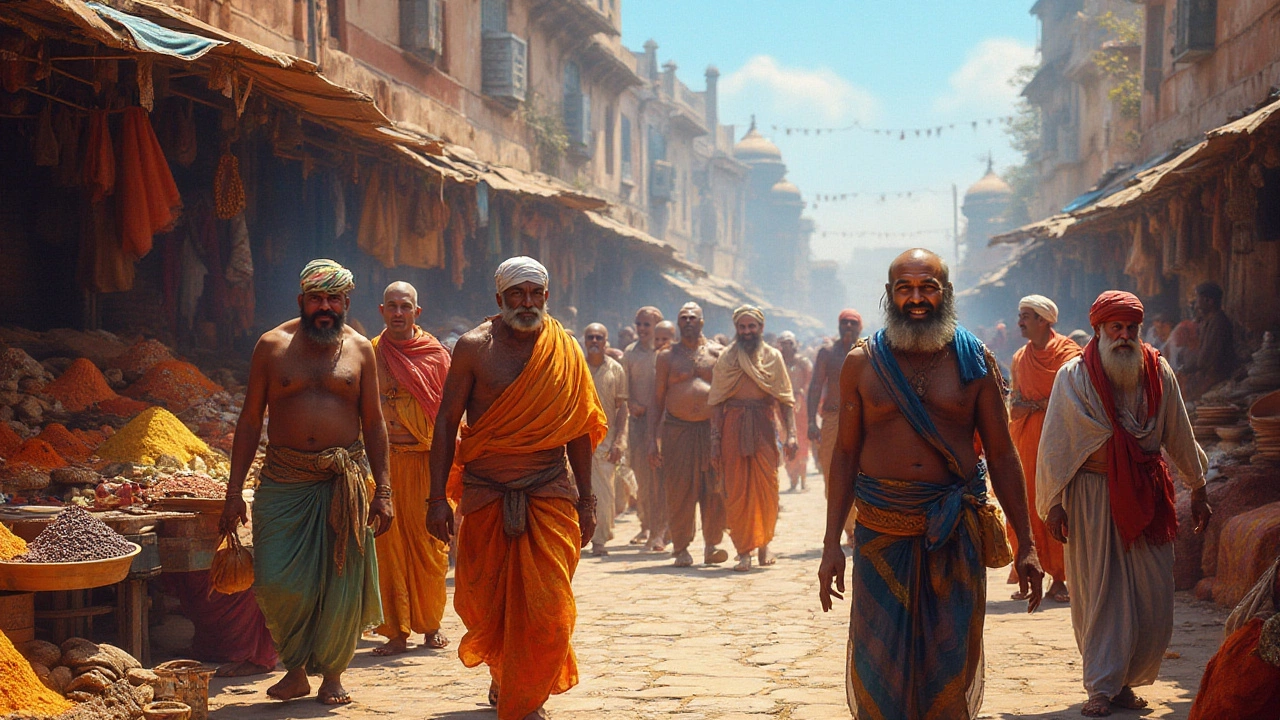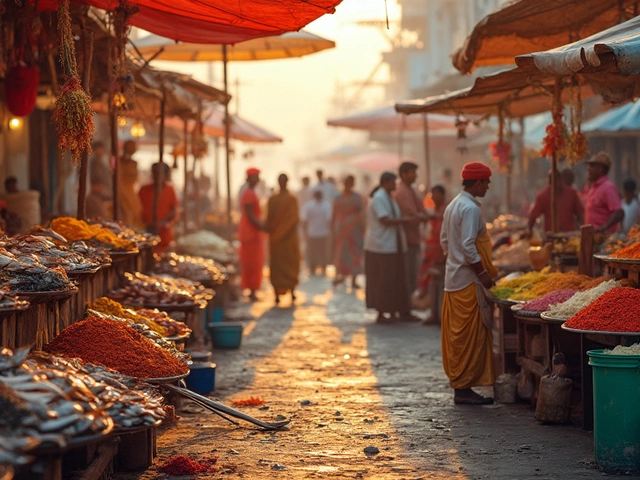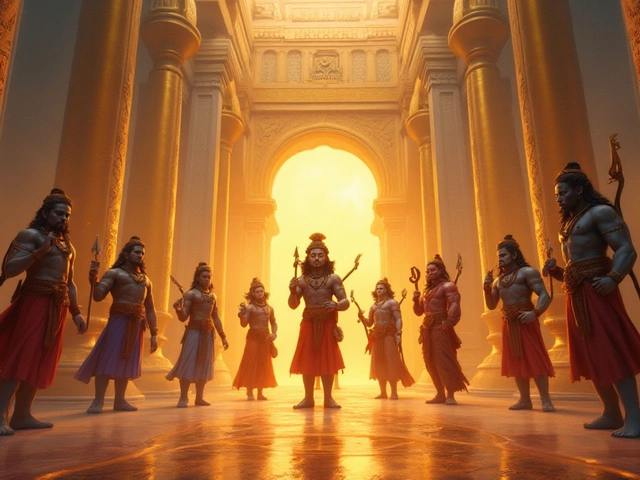India, a land of vibrant contradictions and colorful cultures, is home to numerous ethnic identities, each woven into the nation’s expansive cultural fabric. Among these, the Indo-Aryans are recognized as the largest ethnic group in India, contributing significantly to its linguistic diversity and cultural heritage.
Delving into the Indo-Aryans' roots reveals a fascinating journey marked by migration and evolution. This ethnicity predominantly occupies the northern and central parts of India and speaks languages rooted in the Indo-Iranian family.
Cultural enthusiasts and travelers exploring India will find the influence of the Indo-Aryans in the region's festivals, cuisine, and everyday life. Understanding this group not only offers a glimpse into ancient history but also a perspective on their enduring impact on India's diverse society today.
- Overview of India's Ethnic Diversity
- Historical Background of the Indo-Aryans
- Language and Regional Influence
- Cultural Practices and Traditions
- Indo-Aryans in Modern India
- Travel Tips for Cultural Exploration in India
Overview of India's Ethnic Diversity
India, with its sprawling landscapes and ancient history, is a living mosaic of ethnic groups that each adds a unique hue to the country's cultural tapestry. At any city street or village fair, the plethora of draping sarees to traditional turbans hints at a much deeper diversity. To truly appreciate this, one must delve into the myriad of communities that form the rich ethnic spectrum of the nation. As per the national census, India houses over two thousand ethnic groups, each with its unique language, cultural traditions, and historical lineage. These include, but are not limited to, the Indo-Aryans in the north and central regions, Dravidians in the south, and numerous tribes with distinct tribal cultures in the northeastern states.
One cannot overlook the historical migrations and invasions that have shaped India's demographics. Over centuries, waves of settlers, traders, and explorers from all corners of Asia and beyond have contributed to the ethnic mélange. The Indo-Aryans, for instance, emerged as a dominant ethnic group with their profound influence seen in the prevalence of Indo-Iranian languages across the northern belt. A striking aspect of India's ethnic diversity is how these groups coexist, often bridging cultural gaps through festivals, culinary exchanges, and intermarriages. A traveler today, while observing a Kerala Onam festival or a Bengali Durga Puja, witnesses these diverse strands blending seamlessly into a singular cultural experience known as India. Nobel laureate Rabindranath Tagore once observed, "The world has found a refuge in India, a haven where differences are celebrated."
Cultural Significance of Ethnic Diversity
India's fabric is not only diverse but intricately connected, with interdependencies creating a strong societal structure. The diversity seen today is mirrored in ancient scriptures, which often recount tales of different ethnicities harmoniously cohabiting the Indian subcontinent. Modern India's social dynamics serve as an extension of these ancient principles, where traditional communities interlace their livelihoods, yet maintain distinct cultural identities. This creates a cultural dynamism that is both steadfast and fluid, adapting yet resilient. Also, for cultural tourists, this ethnic diversity is a gold mine to explore the ancient and modern ways of life all under one expansive sky.The spirit of India speaks through its diversity, elucidating the harmonious coalescence of different elements. As per BBC's exploration of India's ethnic dynamics, it emphasizes how unmistakably diverse the nation is, stating "India is not a melting pot; rather it's a kaleidoscope of cultures co-existing together."
Thus, when you visit, it's not just the monuments or natural beauty that will captivate but the melting pot of smells, flavors, and sounds, reflecting the ages-old ethnic diversity. Understanding India's ethnic landscape kindles not only a deeper appreciation for its history but also provides insights into its future as it strides forward as a global cultural powerhouse.
Historical Background of the Indo-Aryans
The story of the Indo-Aryans is a fascinating tapestry of migrations, linguistic evolution, and cultural assimilation that forms a key chapter in India's rich historical narrative. Scholars trace the origins of the Indo-Aryans to the vast steppes of Central Asia. Though the exact timeline remains a topic of debate, it is widely accepted that around 1500 BCE, groups of these ancient people began journeying towards the Indian subcontinent. They followed a path across challenging terrains, driven by a search for fertile lands, climatic stability, and opportunities for trade and settlement.
The Indo-Aryans were part of a larger group known as the Indo-Europeans, whose influence stretched across diverse regions from Europe to Asia. Their migration into India marks a significant period in the subcontinent's history, as they brought with them the seeds of what would evolve into the Indo-Iranian languages, which today dominate northern India. This linguistic heritage is manifest in languages like Hindi, Punjabi, Bengali, and Marathi, all of which stem from the ancient Sanskrit language introduced during these migrations.
Scientific advancements such as archeogenetics have shed new light on the historical movement of these people. Intriguingly, DNA analysis suggests these migrations were not singular events but rather waves that unfolded over centuries, influencing the demographic and cultural landscape. It's crucial to note how this migration wasn't simply a movement of people but an exchange of ideas, techniques, and beliefs that would permanently shape the region's socio-political structures.
Historians highlight the Vedic texts as crucial evidence of the Indo-Aryans' influence. The Vedas, composed during their early settlement in India, provide a glimpse into their world—offering insights into their society, religion, and day-to-day life. These texts laid the foundation for the later Hindu civilization and remain pivotal to understanding the cultural framework of the era. Janet Smalley, a historian noted for her work on ancient Indian cultures, states,
"The Vedic periods are more than mere chronology; they represent an era of blending ideologies that gave birth to a distinctive Indian civilization."
The establishment of the caste system in this period further indicates the Indo-Aryans' influence. This stratification system, initially based on occupation and capabilities, was deeply rooted in the efforts to maintain order within their growing settlements. As the Indo-Aryans integrated with the indigenous populations such as the Dravidians, who already inhabited the subcontinent, a unique culture emerged—marked by syncretism and adaptation. This intermingling resulted in religious and cultural practices that continue to be observed in diverse forms today.
Indo-Aryans: Cultural and Genetic Legacy
The Indo-Aryans left a profound genetic and cultural legacy that can be traced through various modern societal attributes. Cultural relics such as traditional Vedic chants, architectural forms, and yet continued emphasis on oral and written traditions, are testaments to their enduring influence. Excavations and research infer substantial contributions to early urban development in the Ganges plains, which later gave rise to influential empires and civilizations.Modern debates often revolve around the impacts—both positive and negative—of their settlement patterns and societal structures. However, the undeniable reality is the Indo-Aryans greatly enriched the cultural mosaic of India, providing frameworks that influenced language, art, and governance. As one explores the layered history of India, it is critical to recognize the complexities and dynamics presented by the Indo-Aryans in shaping not just a nation's past but its contemporary realities as well.
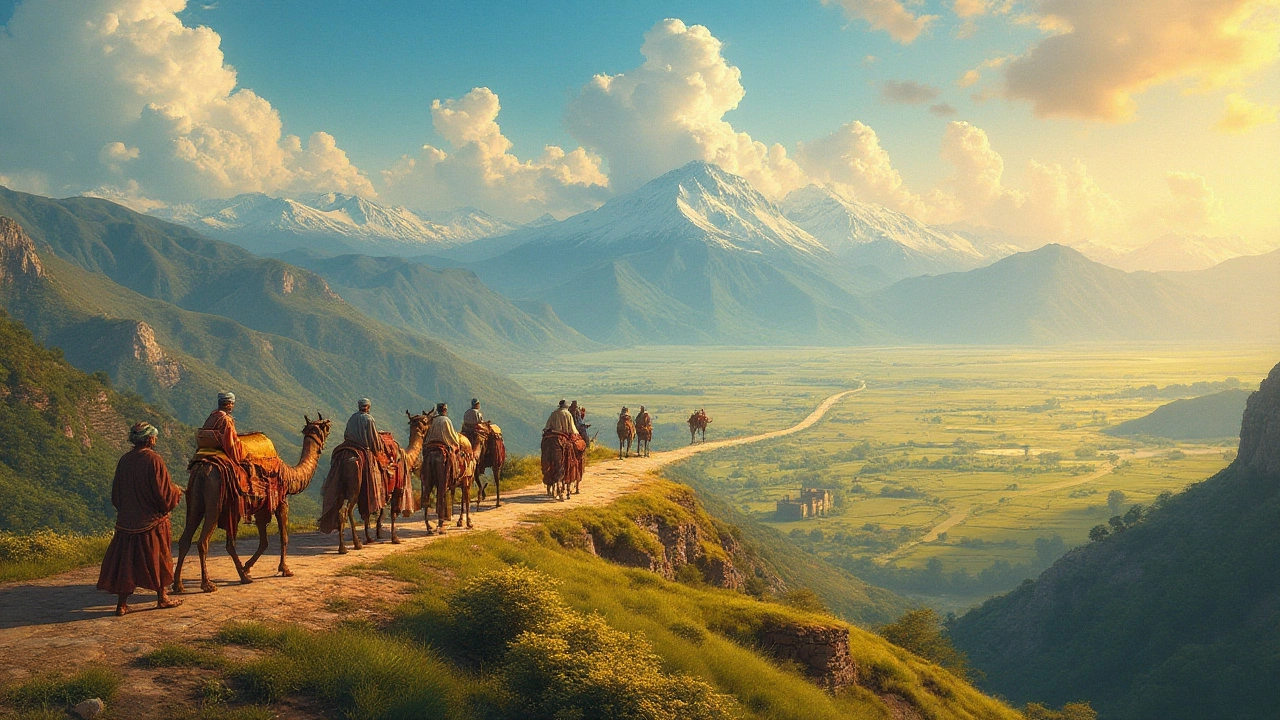
Language and Regional Influence
The linguistic diversity of India is as rich and varied as the landscapes, with the Indo-Aryans significantly contributing to this multilingual tapestry. Their languages, deeply rooted in the Indo-Iranian family, form the majority of the Indo-European languages in India. Predominantly, these languages are spoken in the larger, more populous northern and central regions of the country. Hindi, an Indo-Aryan language, is not only one of the official languages of India but also serves as a lingua franca for millions. The influence of Indo-Aryans is also evident in languages like Bengali, Marathi, Gujarati, Punjabi, and many others, each with its own script, literature, and rich oral traditions.
Interestingly, the linguistic map of India can sometimes resemble a complex mosaic where language demarcations don't strictly adhere to political boundaries. This stems from the historical migrations and settlements of various Indo-Aryan groups over centuries. Their languages, although sharing common roots, have evolved distinctly in different regions, influenced by local cultural nuances and historical interactions with other ethnic groups. For instance, Hindi has absorbed elements from Persian and Arabic, a testament to historical trade and conquest influences.
"Language is the road map of a culture. It tells you where its people come from and where they are going." — Rita Mae BrownThe regional dialects, despite the presence of a standard language, showcase a remarkable ability to adapt and thrive amidst ever-changing societal dynamics.
The Indo-Aryan languages have also played a crucial role in India's literary heritage. Ancient texts such as the Vedas were composed in Sanskrit, an Indo-Aryan tongue which remains influential in religious and scholarly contexts today. Regional literature in languages like Awadhi had significant contributions to the Bhakti movement, while Bengali literature boasts of Rabindranath Tagore, the first Asian Nobel laureate in Literature. Such contributions reflect not just the linguistic richness but also the cultural and emotional highs of the regions they represent. These languages often serve as a repository of the region's collective memory, societal values, and philosophical inquiries, anchoring both past and present ideologies in the fabric of Indian life.
Visitors to India, particularly those exploring the northern and central regions, will often find themselves amazed by the variety of languages they encounter. While Hindi and English are commonly understood, each state or region will have its own predominant Indo-Aryan language, characterized by unique phonetic sounds, script, and idioms. This diversity is celebrated through festivals, music, and theater, where language acts as both a barrier and a bridge. It signifies identity while also facilitating unity within the vast differences. Knowing a few basic phrases in regional languages, such as greetings or pleasantries, can serve as an invaluable tool for travelers, opening doors to deeper connections and authentic experiences.
To further appreciate the linguistic depth, one can explore academic studies or take courses on these languages, available online and in educational institutions. Understanding an Indo-Aryan language unlocks layers of history and provides deeper insights into the region's culture, literature, and social interactions. As India progresses, there are ongoing efforts to preserve these languages through educational policies and cultural programs, ensuring that they remain vibrant and relevant in modern society.
The Indo-Aryan linguistic influence is profound, with a history of adaptation and resilience. It acts as a testament to the cultural continuity and transition witnessed by India's diverse regions. For those compelled by the allure of languages and the stories they tell, unraveling the Indo-Aryan influence offers an enriching window into the heart of India's intricate ethnic and cultural milieu.
Cultural Practices and Traditions
The Indo-Aryans, the predominant ethnic group within India's mosaic of cultures, possess a rich cultural heritage that continues to shape the region’s modern ethos. Their cultural practices and traditions are primarily rooted in the Vedic heritage, which has been a profound influence on the Indian subcontinent for thousands of years. These traditions manifest through various forms of art, literature, and rituals that are practiced widely across regions dominated by the Indo-Aryans. Central to their cultural fabric is the preservation and celebration of ancient texts like the Vedas, which serve as spiritual guides and are often invoked in religious ceremonies. Marriage ceremonies among the Indo-Aryans, rich with symbolism and rituals, reflect the deep-rooted customs passed down through generations. These ceremonies, replete with chants, fire rituals, and symbolic rites, illustrate the blend of spirituality and community in Indo-Aryan life.
Music and dance are also integral parts of the Indo-Aryan cultural landscape, showcasing regional variations yet maintaining a shared heritage. Classical music forms, such as Hindustani classical, capture the complexities and emotions prized in Indo-Aryan art, while folk dances like Bhangra and Garba energetically celebrate life’s key moments. The practice of yoga, entrenched in Indo-Aryan tradition, underscores the community's commitment to physical and spiritual well-being. This practice, with its origins traced back to the ancient sages, is not only a form of exercise but also a spiritual discipline that attracts global attention.
Festivals offer yet another window into the vibrant cultural world of the Indo-Aryans. Celebrations like Diwali, the festival of lights, and Holi, the festival of colors, are not only religious observances but also communal festivities that bring people together in joy and thanksgiving. Such festivals, featuring elaborate rituals, music, and culinary delights, reflect the shared heritage of joy and tradition among the Indo-Aryans. India's diversity is vividly displayed during these times, as communities, regardless of their backgrounds, participate in shared celebrations, symbolizing unity amidst diversity.
The cuisine of the Indo-Aryans also tells a story of historical interactions and adaptations. The staple diet encompassing wheat-based foods such as rotis and parathas, alongside an array of spices, speaks to a history of trade and cultural exchange. The culinary practices highlight not only nutritional values but also a deeply ingrained tradition of hospitality and communal sharing, a characteristic feature of Indo-Aryans. Such practices, reflected during both everyday meals and special occasions, emphasize the importance of food in cultural and social expressions.
Language acts as both a unifying and diversifying force within the Indo-Aryan culture. While Hindi serves as a lingua franca for many, a plethora of regional dialects adds to the linguistic richness. Each dialect, with its unique expressions and idioms, preserves local traditions and history, showcasing the dynamism and adaptability of Indo-Aryan culture over time. This linguistic variety is a testament to the sharing and exchange that characterizes the cultural evolution of the Indo-Aryans.
In observing the Indo-Aryans, one cannot overlook the architecture that testifies to their historic legacy. Magnificent structures such as temples and forts, adorned with intricate carvings and designs, represent artistic achievements and spiritual aspirations. These edifices, which attract both scholars and tourists, stand as reminders of the architectural prowess and cultural sophistication inherent in the Indo-Aryan ethos.
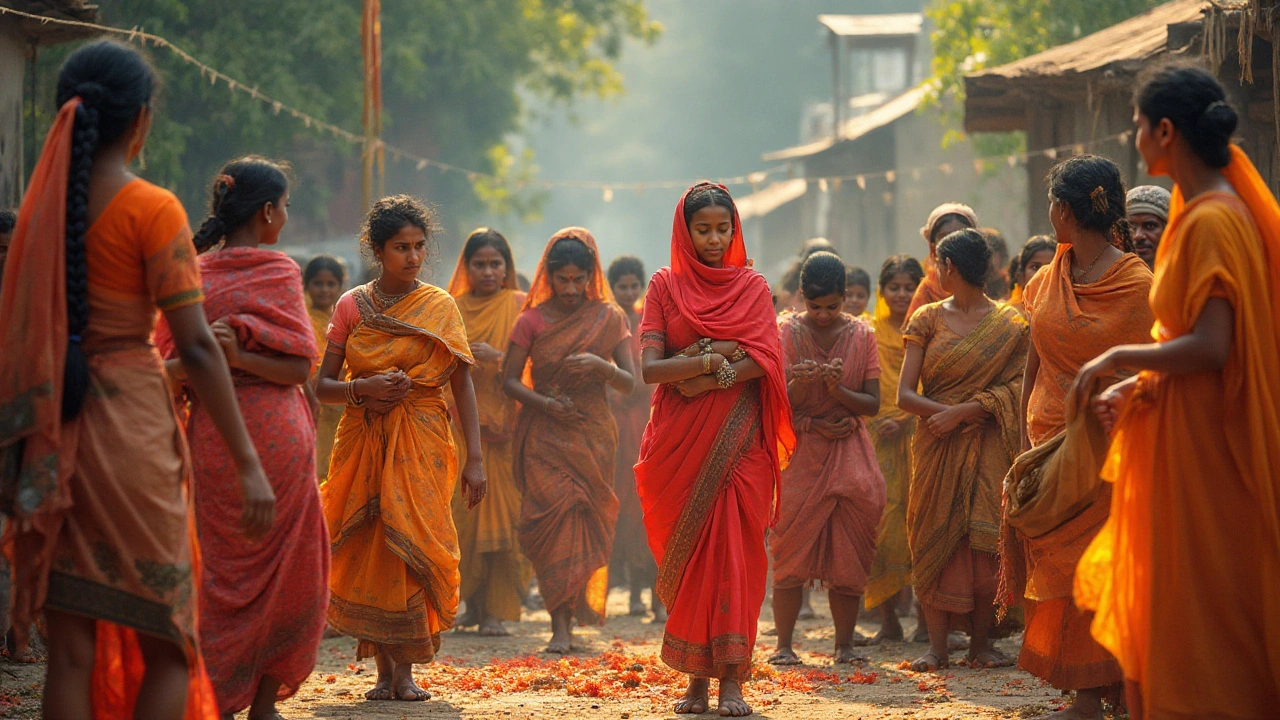
Indo-Aryans in Modern India
Today, the Indo-Aryans represent a significant portion of India's population, playing a crucial role in shaping the nation's contemporary identity. This ethnicity predominantly resides in the northern and central regions, influencing the social and cultural landscape of states such as Uttar Pradesh, Bihar, Rajasthan, and Maharashtra. Their language, predominantly belonging to the Indo-Iranian group, encompasses major tongues such as Hindi, Punjabi, and Bengali, which are spoken widely across the country. This linguistic diversity not only enriches communication but also contributes to the thriving literary and artistic scene in India.
In urban centers like Delhi and Mumbai, the presence of Indo-Aryans is palpable, as they immerse themselves in modern occupations while holding on to their traditional values. This blend of old and new is visible in their participation in professions ranging from politics to entertainment. For instance, Bollywood, centered in Mumbai, thrives on the cultural inputs from Indo-Aryan traditions, influencing film narratives with themes that resonate universally yet hold a distinct regional flavor.
The Indo-Aryans have also made significant contributions to India's economy. As entrepreneurs, they have played pivotal roles in establishing and running some of the country’s most successful businesses. Agricultural areas in Punjab and Haryana benefit from Indo-Aryan expertise, contributing to India’s status as a leading producer of crops like wheat and rice. Their work ethic and community support systems have fostered environments of prosperity and innovation in various sectors.
Despite rapid modernization, the Indo-Aryans retain a rich tapestry of cultural practices passed down through generations. Festivals like Diwali and Holi, primarily celebrated by Indo-Aryans, have transcended regional boundaries to become national events, marked by vibrant activities and communal harmony. These celebrations serve as a reminder of the enduring impact of Indo-Aryan culture on the Indian subcontinent. As noted by noted historian Romila Thapar,
"The traditions and practices of the Indo-Aryans have seamlessly woven themselves into the national fabric, bringing continuity and a sense of belonging to cultural identity."
In the realm of governance, Indo-Aryans have consistently participated in political spheres, holding influential positions in both state and national governments. Their voices often guide policy decisions that affect millions, demonstrating a balanced approach between traditional values and progressive reforms. This active involvement ensures that the aspirations and needs of their communities are addressed while maintaining India's democratic ethos.
For travelers keen on experiencing the diverse culture of India, spending time in Indo-Aryan-dominated regions offers a rewarding glimpse into their lifestyle. Visitors can explore historic cities with rich Indo-Aryan heritage, savor regional cuisines that reflect centuries of culinary evolution, and participate in local festivals. Such experiences provide not only an understanding of this ethnic group’s profound influence but also a chance to witness the dynamic interplay between India's past and present.
Travel Tips for Cultural Exploration in India
Embarking on a journey to explore India's vast cultural landscape, and particularly diving into the world of its largest ethnic group, the Indo-Aryans, is an adventure like no other. Imagine wandering through bustling markets echoing with the cacophony of bargaining voices, or watching the sun rise over ancient temples that have stood the test of time. To truly appreciate the depth of India’s cultural diversity, planning is key. It's not just about visiting famous sites but immersing yourself in local traditions and understanding the ethos that drives daily life.
Begin your journey by acknowledging the significance of India’s array of regional festivals that dot the calendar year. These are not mere celebrations but windows into the social fabric of the country. The Diwali festival, celebrated by millions across the nation, offers a glimpse into the spiritual and communal aspects of Indo-Aryan culture, filled with lights, dance, and sumptuous feasts. Whether it's Holi, with its vibrant hues and joyous chaos, or Raksha Bandhan, a celebration of sibling bonds, each festival has its unique charm. Consider attending one of these festivals—be it in the heart of Varanasi or the lively streets of Jaipur—where traditional customs are alive and vibrant.
When traversing India, understanding the linguistic diversity within the Indo-Aryan group can greatly enhance your travel experience. Regions primarily dominated by Indo-Aryan languages like Hindi, Bengali, Punjabi, and Marathi each offer unique cultural insights. Hindi and its dialects are widely spoken and a few simple words can go a long way in enhancing connections. However, linguistic diversity means you'll often hear snippets of conversations in several other Indo-Aryan languages, offering an authentic auditory mosaic of the community.
As you visit these regions, delve deeper by exploring local cuisines—a palette pleasing and diverse as the people themselves. From the aromatic Mughlai dishes of Delhi and the fiery flavors of Rajasthani thalis, to the creamy textures of Marathi delicacies, your taste buds are in for a treat. Street food is not only delightful but it offers a taste of local life at a fraction of the cost of dining in fancier establishments. Remember to take the path less trodden and explore local eateries recommended by residents.
The accommodation in India ranges widely, from luxurious heritage hotels to budget-friendly ashrams where you can experience a slice of monastic life. Staying in a homestay is another fantastic way to immerse yourself in daily Indo-Aryan household traditions, offering insights into their lifestyle, customs, and genuine hospitality. Research options well in advance to ensure safety and comfort, especially if traveling solo.
"Traveling in India is as much about the journey as the destination." - Mark Twain
To make the most of your cultural exploration, consider hiring local guides who can provide a rich narrative background, enhancing your appreciation for each site’s history and significance. These guides often share stories passed down through generations, giving you a perspective that isn't easily found in guidebooks. It’s also wise to be mindful of local customs. Dress respectfully, especially when visiting sacred sites; attire may need to cover shoulders and knees. Always remove shoes before entering temples and respect local practices.
Lastly, the infrastructure may vary greatly; be patient and embrace the unpredictabilities. Transport can range from state-of-the-art metro trains in cities like Delhi to more rustic rickshaw rides. Embrace the chaos and color of the surroundings, and remember that traveling in India is about creating stories, connecting with the people, and celebrating the country’s incredible diversity and the unyielding spirit of the Indo-Aryans.
